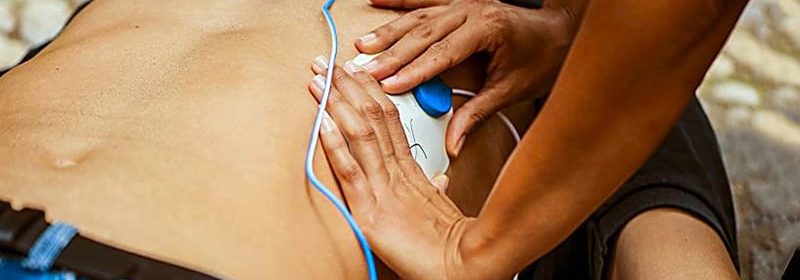In Refractory VF, DSED or VC Defibrillation Both Beat Standard Tx

Among patients with refractory ventricular fibrillation (VF), survival to hospital discharge was more frequent with double sequential external defibrillation (DSED) and vector-change (VC) defibrillation than with the standard approach, a cluster-randomized trial shows.
DSED consists of rapid sequential shocks from two defibrillators; VC defibrillation involves switching defibrillation pads from the anterior–lateral to an anterior–posterior position.
“Some preliminary work prior to the trial suggested a benefit of DSED,” Sheldon Cheskes, MD, of the Sunnybrook Centre for Prehospital Medicine in Toronto, Ontario, Canada, told theheart.org | Medscape Cardiology. “What surprised us was that both DSED and VC defibrillation were found to be superior to standard defibrillation.”
DSED and VC were associated with greater survival to hospital discharge, whereas DSED, but not VC, was associated with a higher percentage of good neurologic outcomes.
The findings were presented November 6 at the American Heart Association (AHA) Scientific Sessions 2022 Resuscitation Science Symposium held in Chicago and virtually, and simultaneously published online in the New England Journal of Medicine.
Improved Survival
The trial, which compared DSED, VC, and standard defibrillation, was conducted in six Canadian paramedic services in adults with refractory ventricular fibrillation during out-of-hospital cardiac arrest.
All patients underwent three standard defibrillation attempts. Those who remained in ventricular fibrillation after three consecutive shocks received one of the three defibrillation strategies that was randomly assigned to the paramedic service.
In total, 405 patients (mean age, 63.6 years; 84% men) were enrolled before the trial was stopped because of the COVID-19 pandemic. Overall, 68% of out-of-hospital cardiac arrests were observed by bystanders and 58% of patients received bystander CPR. The median time from initial call to first defibrillation (about 10 minutes) and the resuscitation characteristics were similar for the three groups.
Compared to the standard group, survival to hospital discharge was higher in the DSED (30.4% vs 13.3%; relative risk [RR], 2.21) and VC (21.7% vs 13.3%; RR, 1.71) groups.
DSED, but not VC, was associated with a greater percentage of patients having a good neurologic outcome (defined as a modified Rankin scale score of 2 or lower, indicating no symptoms to slight disability) compared with standard defibrillation (RR, 2.21 and 1.48, respectively).
Ventricular fibrillation termination occurred in 84% of the DSED group compared with 67.6% of the standard group (RR, 1.25), and return of spontaneous circulation occurred in 46.4% versus 26.5% (RR, 1.72).
In the VC group, ventricular fibrillation termination occurred in 79.9%, for an RR of 1.18 versus standard defibrillation; return of spontaneous circulation occurred in 35.4% (RR, 1.39).
Study limitations include early termination, which led to reduced sample size; unknown length-of-stay distributions across trial centers; lack of information on patient race/ethnicity, coexisting conditions, and medications; and the urban setting, which may limit generalizability to remote settings where a second defibrillator is not available for DSED.
“We will be publishing further work on our study, incorporating an assessment of the optimum timing of the two DSED shocks, the impact of STEMI management in refractory ventricular fibrillation during the trial, and the role of defibrillator waveforms on outcomes, among others,” Cheskes said.
“It is highly unlikely there will be any further studies in this area as they are extremely difficult to conduct in prehospital care,” he noted. “Our research team feels now is the time to incorporate our findings into treatment.”
Ready for Prime Time?
Critical care medicine intensivist Mark M. Ramzy, DO, EMT-P, a clinical assistant professor at Rutgers New Jersey Medical School and a member of the core emergency medicine faculty at the RWJBarnabas Community Medical Center, commented on the study for theheart.org | Medscape Cardiology.
“I use DSED frequently in appropriate patients. I have not used VC defibrillation as I often go right to double defibrillation,” said Ramzy, who was not involved in the study. “Double defibrillation unfortunately gets a bad reputation due to the paucity of strong literature to support it. This randomized controlled trial was well performed on a large body of patients and should take the skepticism out of performing this potentially life-saving intervention.”
Like the authors, he pointed to the limitations resulting from early termination of the trial and noted that “a phone call/virtual interview or in-person follow-up would help add to the secondary outcome of neurologically intact survivors. The length of hospital stay is something that should have been reported, (and) it’s tough to tell how well-balanced the groups were given some missing information.”
Nevertheless, he said, “Double defibrillation or an alternate pad placement should be strongly considered for all patients in refractory ventricular fibrillation. It should be combined with early high-quality compressions, appropriate medications, and thorough investigation for the underlying cause of a patient’s cardiac arrest. Additional studies are needed to investigate more specific details behind the procedure, but this previously controversial life-saving intervention should be used and is here to stay.”
In a related editorial, Comilla Sasson, MD, PhD, and Jason Haukoos, MD, of the University of Colorado School of Medicine in Denver, write: “Additional research is needed to further define the effects of DSED and VC defibrillation for refractory ventricular fibrillation, including trials specifically powered to test the difference between the two approaches and those that incorporate details related to post resuscitation care.
“Until then, such extended forms of defibrillation are not ready for usual care, although they may be considered when no further treatment options exist,” they conclude.
The study was supported by the Heart & Stroke Foundation of Canada Grant-in-Aid Program. Cheskes has reported receiving honoraria from ZOLL Medical. No other commercial interests were disclosed.
American Heart Association (AHA) Scientific Sessions 2022. Resuscitation Science Symposium 2022. Abstract #17. Presented November 6, 2022.
N Engl J Med. Published online November 6, 2022. Abstract, Editorial
Follow Marilynn Larkin on Twitter: @MarilynnL.
For more from theheart.org | Medscape Cardiology, follow us on Twitter and Facebook.
Source: Read Full Article